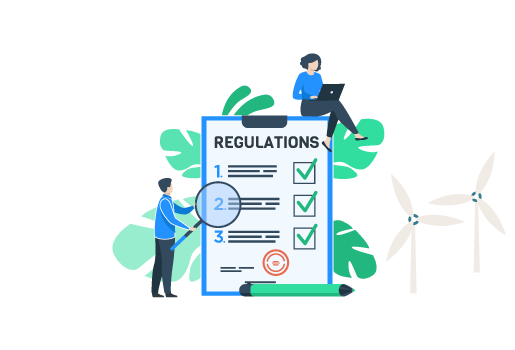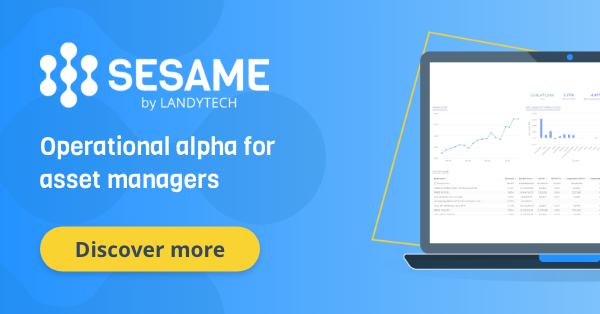Written by Landytech
16 Sep 2022SFDR is one of the largest pieces of ESG-related legislation rolled out anywhere in the world, and their compliance requirements are a daunting prospect for fund managers and wider financial market participants.
Under Level 1 of SFDR, market participants are already expected to declare the level to which their investments can be regarded as sustainable, according to the framework set out by SFDR and the EU Taxonomy. Under Level 2, expected to come into force in January 2023, firms will be obliged to disclose in much greater detail how and why they have made their Level 1 declarations.
These requirements will put significant responsibility on fund managers from a data management perspective. Here we outline the key challenges firms will need to overcome.
Integrating non-financial ESG data
Despite a delay in the publication of the Regulatory Technical Standards (RTS) to January 2023, it has been known for some time that the quantity and availability of nonfinancial ESG data needed for SFDR compliance will make data collection and disclosure a significant challenge.
The regulation aims to take transparency and accountability in investment management to a level not seen before. One of the main ways it will seek to do this is by asking companies to report on the Principle Adverse Impacts (PAIs) of their activities. It will require companies in scope to provide extensive disclosures on various ESG related matters, including greenhouse gas emissions and other indicators, in a templated format.
PAIs are a detailed and prescriptive set of requirements that will mean FMPs and financial advisers may need to source data from several vendors to give them maximum visibility they need to make their own PAI statements and disclosures. It will place a new burden on data management processes for firms, whose IT and data management systems will need to accommodate this surge of nonfinancial information.
Filling in the data gaps
An added data complexity with SFDR is that asset managers are required to disclose the ESG performance of the companies in which they are invested. If invested in large, publicly listed companies with their own sustainability reporting, this may be relatively straightforward. However, if portfolios contain small caps, or private companies, there may be little ESG data available.
Gaps will also exist depending on geographic area. For example, in Asia Pacific, only companies listed in Hong Kong or Singapore are subject to disclosure rules. Even in the US, the extent of sustainability reporting has yet to be confirmed. European managers holding assets in regions with limited ESG performance data will be forced to seek workarounds to comply.
Building data processes fit for SFDR
Currently, where companies are unable to provide regulators with the necessary sustainability disclosures, SFDR regulation enables companies to have the opportunity to demonstrate they made their best efforts to secure it. However, this means firms need to give detailed insight into the data and measures that were used and how it was gathered, providing the details of any data vendors.
Documenting your data collection process
Having the ability to ingest new ESG data is one issue, managing and developing data governance structures is another. The non-financial nature of ESG data mean it is not like price and reference data, for which most firms will usually have established processes. ESG data requires standardising and structuring so that it can be integrated with financial data in reports.
Sourcing, standardising and structuring ESG data can be difficult when dealing with multiple sources, especially if vendors work to different methodologies, frameworks and update frequencies. Where firms receive ESG performance data about a company from multiple vendors that cover the same metrics, they will need to clearly state their justification for using one metric over the other.
ESG information then needs to be consolidated with firms’ own data, from sources such as the portfolio management system. This data may not readily align, meaning that in order for firms to meet all the data requirements of SFDR, they could be forced to make their own calculations and build their own ESG models.
Getting your data ready for SFDR
ESG reporting requirements are growing rapidly, and nowhere is this more prominent than with the rollout of SFDR. Whilst the European Commission have not yet indicated the exact penalties for non-compliance with SFDR, it is expected that the penalties will be severe.
Only with reliable and trusted sources of data can companies hope to fulfil all the requirements of SFDR compliance. Some firms will try to build a set up themselves, engaging ESG data vendors and establishing new feeds. But this route contains many pitfalls, not least establishing the exact data they will need depending on their unique product and entity disclosure requirements.
The best strategy is to establish a single database for your financial and nonfinancial ESG data, eliminating complexity and increasing efficiency as firms look to meet their obligations. Flexibility, scalability and reliability will be the name of the game when it comes to ESG data and firms need a solution that will meet their needs as the regulatory landscape evolves and the data volumes continue to increase.
Landytech's Sesame platform is helping asset managers comply with SFDR and other regulations on a daily basis. Find out more by clicking below.
Related Content

The asset manager’s how-to guide to ESG reporting
There has been an explosion in the popularity of environmental, social, and governance funds in recent years. In light of this growth, fund managers have been increasingly keen to step up their commitment to ESG and its measurement.The rewards for...

4 top trends driving the ESG reporting agenda in 2022
Interest in ESG has increased exponentially in recent years and there has been no sign of slowing in 2022, so far. But it is not just inflows to ESG funds that has been increasing. As policymakers turn their attention to environmental, social, and...

SFDR Article 6, 8 and 9 products explained. What do the classifications mean?
The EU has started to implement the Sustainable Finance Disclosure Regulation (SFDR), which sets out rules for classifying and reporting on sustainability and ESG factors in investments.
Forming part of the EU Financing Sustainable Growth Action...




